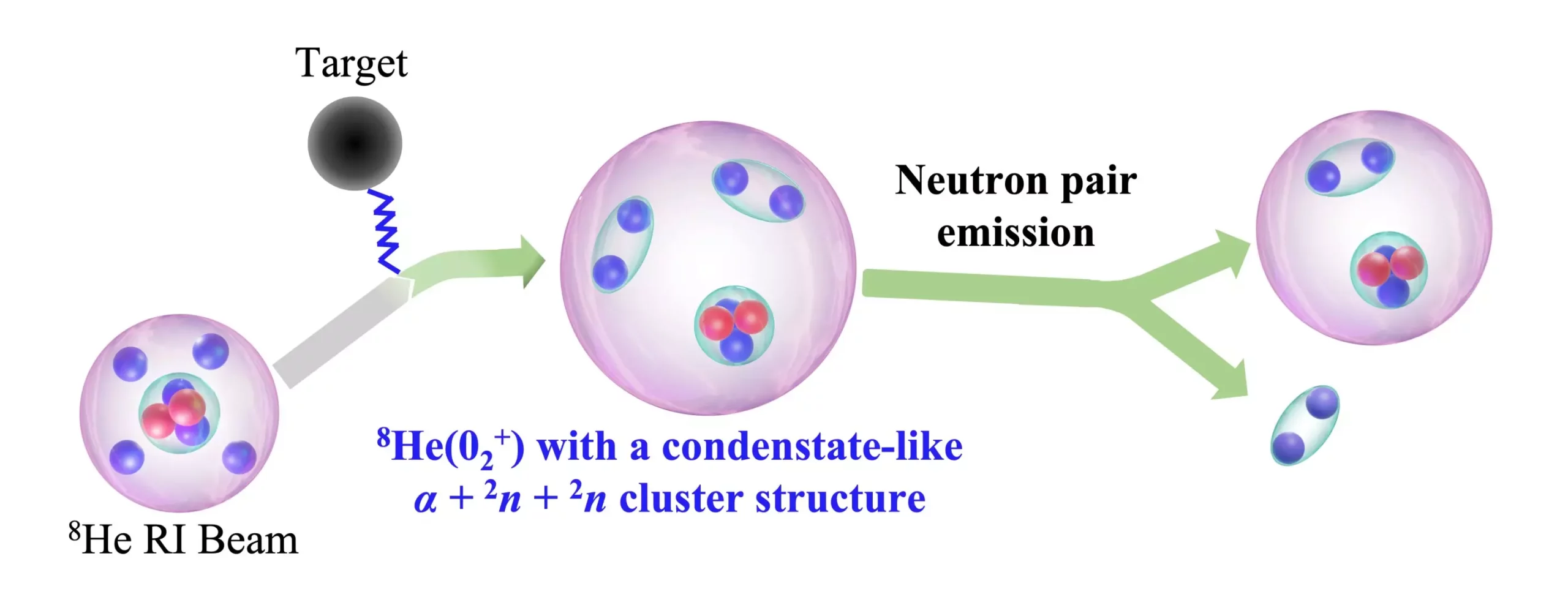In a groundbreaking study, researchers at Peking University in China have successfully observed the elusive 02+ state of 8He. This discovery not only provides insights into exotic nuclear structures but also has potential implications for understanding neutron stars. The findings, published in Physical Review Letters, challenge the conventional nuclear model and open up new avenues for exploring the complexities of nuclear physics.
Limitations of the Conventional Nuclear Model
The conventional nuclear model, rooted in quantum mechanics, posits a single-particle picture where nucleons, protons, and neutrons move independently within a nucleus, forming a well-defined shell structure. Governed by a mean potential created by nuclear forces, nucleons fill distinct energy levels or shells, leading to increased stability associated with magic numbers. While this model successfully explains nuclear structure and stability, it encounters limitations when addressing exotic nuclei that are neutron-rich and unstable.
The team led by Prof. Zaihong Yang at Peking University aimed to understand the structure of the nucleus and how it arises from the complex nuclear interactions between constituent nucleons. They were particularly interested in the condensate-like cluster structure in the neutron-rich nucleus 8He, which had been theoretically predicted but remained elusive due to the difficulty in production and identification.
The observed cluster state in 8He refers to a specific nuclear configuration where two strongly correlated neutron pairs, known as dineutron clusters, combine with an alpha cluster (four helium nuclei), forming a “condensate-like cluster structure.” This structure draws an analogy to Bose-Einstein condensates (BECs), a state of matter formed at extremely low temperatures, where particles occupy the same quantum state, exhibiting collective behavior. Similarly, in the 8He cluster state, the two dineutron clusters and the alpha cluster collectively contribute to the nuclear structure.
The Experimental Endeavor
To observe the theorized cluster state, the research team performed a nuclear scattering experiment at the RIKEN Nishina Center in Japan. The focus of the experiment was on distinctive characteristics, including the elusive spin parity of the cluster state, an unusually considerable isoscalar monopole transition strength, and the emission of a strongly correlated neutron pair. The results of the experiment, supported by state-of-the-art theoretical calculations, provided strong evidence for the formation of two strongly correlated neutron pairs and an exotic condensate-like cluster structure in the 02+ excited state of 8He.
This groundbreaking accomplishment not only validates theoretical predictions but also highlights the need to improve nuclear structure theories to understand the complexities of unstable nuclei lying at the limit of stability. Despite the nucleus being made of fermionic nucleons (protons and neutrons), the 02+ state in 8He has been found to exhibit bosonic characteristics, resembling a BEC-analogous cluster state. These findings broaden our understanding of nuclear physics and offer valuable insights into the formation and behavior of condensation states, with potential implications for superconductivity and neutron superfluidity.
The observed condensate-like cluster structure in 8He holds profound significance beyond nuclear and quantum physics. It has implications for our understanding of astrophysical phenomena, specifically the cooling process of neutron stars and glitches in pulsars. The formation of neutron pairs in the 02+ state aligns with the suggested onset of neutron superfluidity in the interiors of neutron stars. Understanding the structure and properties of neutron-rich matter in finite nuclei can provide insights into the behavior of dense neutron-rich matter in neutron stars, ultimately unraveling the mysteries of cosmic phenomena.
Looking ahead, the researchers aim to extend their measurements to other neutron-rich nuclei lying around the neutron drip line. They are particularly interested in studying how the condensate-like cluster structure evolves with more dineutron clusters and exploring systems made purely of neutrons, such as tetraneutrons and hexaneutrons. Although production and identification of such states pose challenges, the construction of worldwide radioactive ion-beam facilities and new detector systems offers promising opportunities for further exploration.
The observation of the elusive 02+ state of 8He and the discovery of its condensate-like cluster structure have opened up new frontiers in the study of exotic nuclear structures and their implications for astrophysics. This groundbreaking research challenges the conventional nuclear model and highlights the need for improved theoretical frameworks to understand the complexities of unstable nuclei. The link between nuclear physics and astrophysics promises to enhance our understanding of both microscopic nuclear structures and macroscopic cosmic phenomena.


Leave a Reply